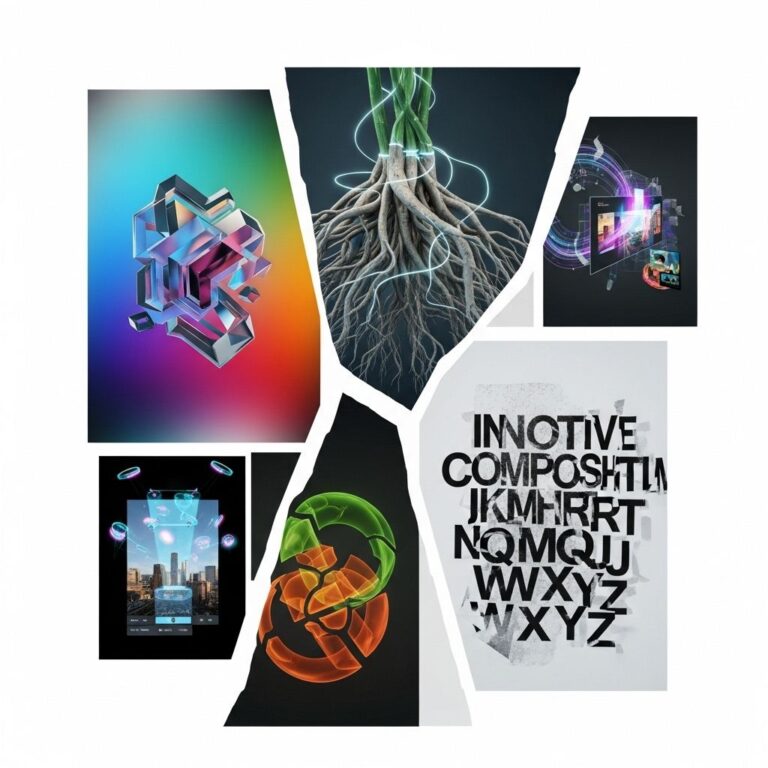In the digital age, having a standout graphic design portfolio is essential for any artist looking to showcase their work and attract clients. A portfolio not only serves as a visual resume but also as a platform that reflects an individual’s unique style and creative process. With countless websites available for showcasing designs, choosing the right platform can be daunting. This article highlights ten of the best graphic design portfolio websites, each offering unique features that cater to the diverse needs of graphic designers.
Table of Contents
1. Behance
Behance is one of the most recognized platforms for creatives. It allows designers to display their work in a visually appealing format, making it easy for potential clients and collaborators to browse projects. The community aspect of Behance is also significant, as it enables networking with other professionals and getting feedback on works.
Key Features:
- High-quality project presentation
- Networking opportunities with other creatives
- Customizable profile options
- Integration with Adobe Creative Cloud
2. Dribbble
Dribbble is more than just a portfolio website; it’s a thriving community of designers sharing their work, getting feedback, and discovering new trends. It is particularly popular among UI/UX designers and illustrators due to its focus on showcasing individual shots or small projects.
Advantages:
- Interactive design showcase
- Job board for freelance opportunities
- Community feedback and critique
3. Adobe Portfolio
Adobe Portfolio is a part of the Adobe Creative Cloud suite, making it a convenient option for those who are already using Adobe products. It provides a range of customizable themes and layouts, allowing designers to create a portfolio that reflects their style effortlessly.
Highlights:
| Feature | Description |
|---|---|
| Customization | Variety of customizable themes |
| Integration | Seamless integration with Adobe apps |
| Responsive Design | Mobile-friendly layouts |
4. Wix
Wix is a website builder that offers a user-friendly drag-and-drop interface, making it easy for designers to create professional-looking portfolios without any coding knowledge. It provides a variety of templates specifically designed for showcasing creative work.
Benefits of Wix:
- Intuitive website builder
- Numerous templates and design options
- SEO tools to enhance visibility
5. Squarespace
Squarespace is known for its stunning templates and ease of use. It’s ideal for designers who want a visually striking portfolio that requires minimal setup. The platform supports high-quality images and videos, ensuring that your work is displayed in the best possible way.
Notable Features:
- Visually appealing templates
- Built-in blogging platform
- 24/7 customer support
6. Carbonmade
Carbonmade is a simplified portfolio builder designed specifically for creatives. It’s straightforward to use and offers unique features like customizable project covers and playful layouts. This platform is perfect for designers looking for a quick setup without sacrificing quality.
Unique Selling Points:
| Feature | Details |
|---|---|
| Customization | Custom covers for projects |
| Simple interface | Easy navigation and setup |
| Animation | Ability to include GIFs and videos |
7. Format
Format provides a flexible platform for creatives to showcase their work professionally. It offers customizable themes, client proofing tools, and integrated blogging capabilities. This allows designers to not only showcase their portfolios but also share their thoughts on industry trends.
Core Features:
- Client proofing galleries
- Blogging platform
- SEO-friendly designs
8. PortfolioBox
PortfolioBox is a versatile platform that enables designers to create portfolios easily. It is particularly appealing for those who want to maintain separate galleries for different types of work. PortfolioBox supports multimedia content, allowing users to create an engaging experience for viewers.
Strengths:
- Multi-gallery support
- Easy to use
- Options for embedding videos and music
9. WordPress
WordPress is a powerful content management system that can be used to create a highly customizable portfolio. With thousands of themes and plugins available, designers can tailor their portfolios to showcase their individuality while also enhancing functionality.
Advantages of Using WordPress:
| Benefit | Explanation |
|---|---|
| Flexibility | Highly customizable with themes and plugins |
| SEO capabilities | Tools for optimizing visibility |
| Community support | Large community for troubleshooting and advice |
10. The Dots
Known as a professional networking platform, The Dots helps creatives connect and collaborate. It’s an excellent place to showcase portfolios while also discovering job opportunities. Designers can create profiles that highlight their work and connect with peers and potential clients.
Features to Consider:
- Networking with industry professionals
- Job listings tailored for creatives
- User-friendly portfolio sharing options
In summary, choosing the right platform for your graphic design portfolio is crucial to your success as a designer. Each of the options listed above has its strengths and unique features, catering to various needs and preferences. Whether you prioritize customization, community feedback, or multimedia support, there’s a platform out there that can help you showcase your work effectively. Take your time to explore these platforms and find the one that resonates most with your creative vision.
FAQ
What are the best graphic design portfolio websites?
Some of the top graphic design portfolio websites include Behance, Dribbble, Adobe Portfolio, Coroflot, and Carbonmade, each offering unique features for showcasing your work.
How do I create an effective graphic design portfolio?
To create an effective graphic design portfolio, focus on showcasing your best work, include a variety of projects, maintain a clean and professional layout, and provide context for each piece.
What should I include in my graphic design portfolio?
Your graphic design portfolio should include a selection of your best projects, a brief description of each, your design process, client testimonials, and your contact information.
How often should I update my graphic design portfolio?
You should update your graphic design portfolio regularly, ideally every few months, to reflect your latest work, skills, and experiences. This keeps your portfolio fresh and relevant.
Can I use social media to showcase my graphic design portfolio?
Yes, social media platforms like Instagram, Pinterest, and LinkedIn are excellent for showcasing your graphic design portfolio, allowing you to reach a broader audience and connect with potential clients.
What makes a graphic design portfolio stand out?
A standout graphic design portfolio features unique and innovative designs, a cohesive style, engaging storytelling, and a user-friendly layout that makes navigation easy for viewers.









